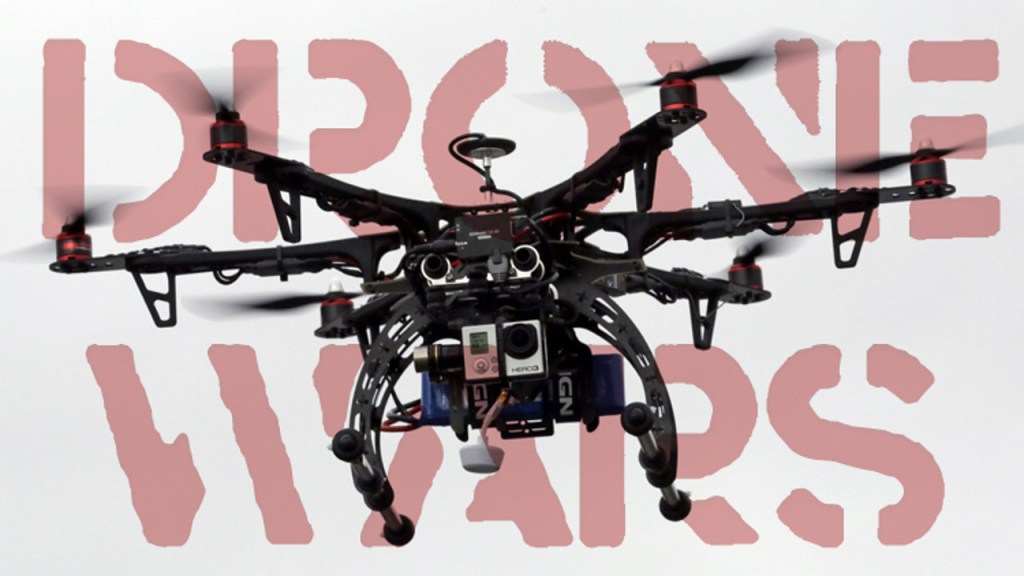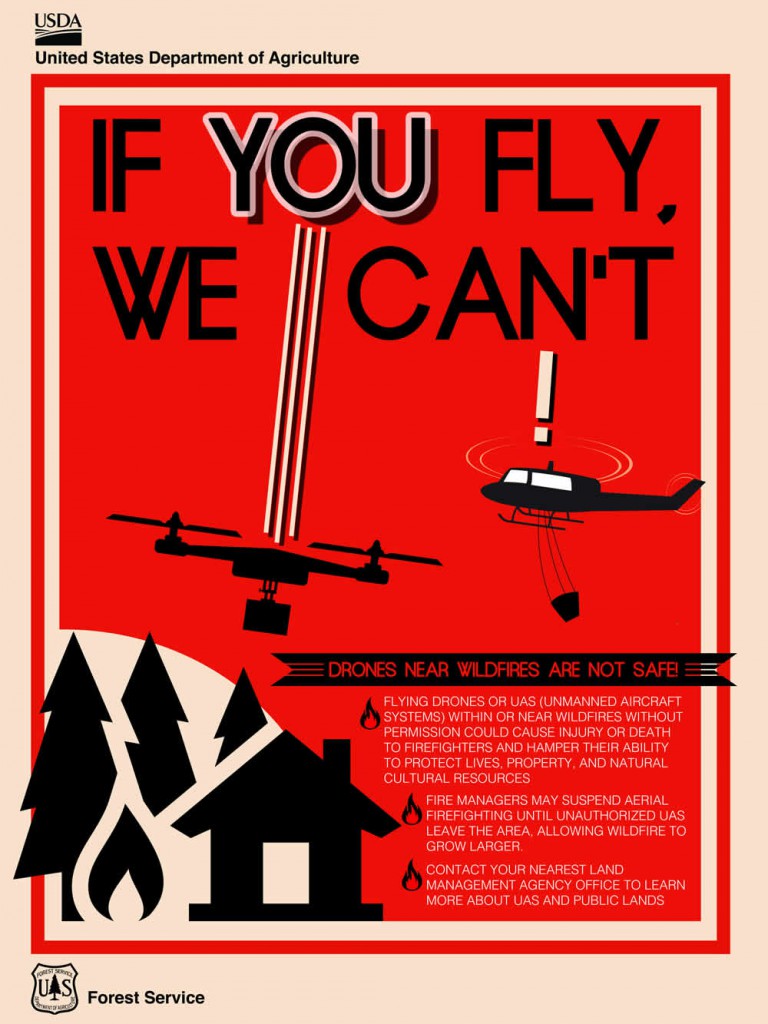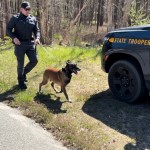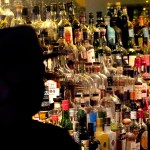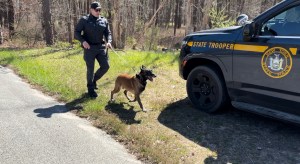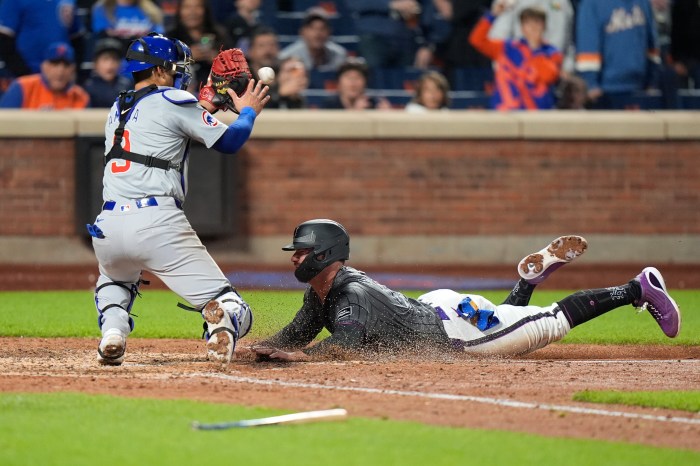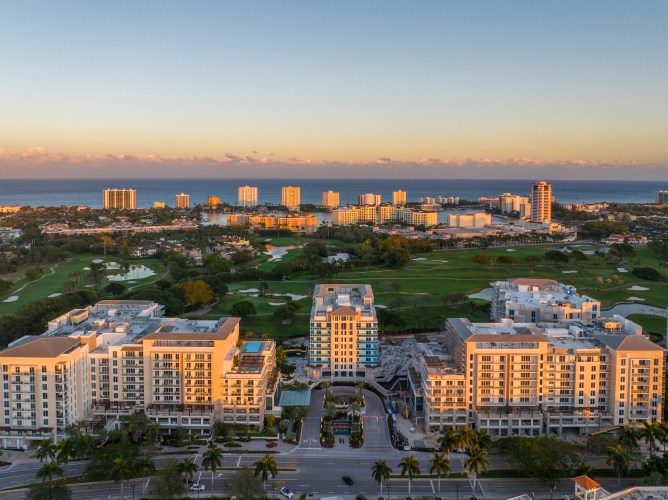The pilot of a small single-engine plane was approaching Long Island MacArthur Airport in Ronkonkoma when a drone bolted out of the blue on a sunny afternoon a year ago Monday.
The pilot didn’t have to take evasive action to avoid a collision with the remote-controlled, unmanned mini-aircraft—unlike other near-misses in New York metro area skies—but air traffic controllers reported the scare to the Federal Aviation Administration (FAA), which has been tracking cases of drones flying within restricted airspace since the devices’ popularity increased in recent years.
“I just passed a drone—that was pretty wild!” the pilot of a Mooney M20R Ovation told the air traffic control tower at Long Island MacArthur Airport (LIMA), according to an audio recording of the incident obtained by the Press from LiveATC.net. “It was at approximately 2,000 feet. That was pretty scary, actually.”
Under FAA guidelines, unmanned aircraft are not allowed to fly above 400 feet, within five miles of airports, interfere with aircraft, hover over stadiums or large crowds and operators must keep drones within their line of sight. Fines for endangering aircraft or people on the ground can run up to $25,000. Local laws also restrict them to designated hobby aircraft flight areas, such as Nassau County’s Cedar Creek Park in Seaford.
LIMA officials were unconcerned with the pilot’s sighting over LI, however.
“This is kind of a blip on the radar,” said Rob Schnieder, MacArthur airport’s deputy commission for operations, who noted that lasers being pointed at aircraft are a bigger problem. “If there was a risk to flight safety, there would’ve been a more active response.”
The operator of that drone was never found. The FAA said it was last seen about five miles northwest of MacArthur airport—placing it above the Hauppauge-Smithtown area, which is home to the main complex of Suffolk County government buildings. Why a drone would be hovering nearly half a mile over Suffolk’s capital region remains a mystery.
The incident was one of at least 20 drone sightings reported by pilots and folks on the ground to either the FAA or police in Nassau and Suffolk counties since the first confirmed case of a drone interfering with a jetliner over LI in 2013, the Press has found—a number likely much higher when factoring in incidents unreported to authorities. Drones’ rising popularity—with some models selling for as little as $50—prompted Suffolk County to pass a bill regulating the devices, with Nassau County, the Town of Huntington and Village of Saltaire on Fire Island considering similar legislation as well as New York State and New York City. Aside from the safety of those on the ground and in the air, the debate often hinges on the privacy of those subjected to the gaze of cameras affixed to drones, whether the operator is a private citizen or a member of law enforcement.
While authorities fear drones may crash into manned aircraft, through a plane window or get sucked into a jet engine, lawmakers are also concerned about them colliding with people on the ground or being equipped with cameras and spying.
The FAA—which expects to finalize new drone rules next year, well after a congressional deadline set for next month—said Wednesday that pilot reports of errant drones nationwide nearly tripled from 238 last year to more than 650 as of Aug. 9. About two dozen have been spotted over NYC skies, some of which were confiscated by city police, who’ve charged a few operators with reckless endangerment.
Drone fears first made local news on Jan. 31, 2007, when an Egyptian engineer who entered the country on a Sudanese passport tested a drone capable of carrying a 600-pound load on an airstrip in Calverton, WNBC reported a year afterward. Although the test failed, it reportedly sparked a terrorism investigation that concluded without charges being filed against the engineer, who was later deported for unrelated reasons.
The debate and recent local sightings of small drones come amid national tension over the Obama administration’s use of the Hellfire-missile-armed, 66-foot wingspan Predator drones to bomb terrorists overseas, including American citizens such as Westbury-native Samir Khan, the al-Qaeda propagandist killed in US airstrikes in Yemen four years ago. President Obama apologized four months ago after a drone killed another American, former SUNY professor Warren Weinstein, who was taken hostage by al-Qaeda in Pakistan. And small drones have been reportedly causing turbulence across the county by dropping drugs into prisons, interfering with California wildfire firefighters and crashing into people at public events.
Back on LI, several months after the aforementioned pilot spotted the drone on his way to MacArthur airport, Suffolk County Legis. Dr. William Spencer (D-Centerport) suggested that camera-equipped drones could be clandestinely used to take pictures of sensitive documents through the windows of government buildings.
“When we talk about the ability of these drones as they are becoming more and more sophisticated…there are no rules of the road at this particular point,” said Spencer, a pediatrician and drone hobbyist who co-sponsored the county’s drone bill, which passed the legislature last month. “The [H. Lee] Dennison Building and a lot of our office spaces … could have the expectation of privacy with documents on their desk.”
Suffolk County Executive Steve Bellone—whose offices are on the 12th floor of the estimated 146-foot-tall Dennison Building—has until Aug. 27 to decide whether to sign or veto the drone bill. His spokesman did not indicate which way he’s leaning. If the bill is signed into law, it would go into effect in 90 days.
(Update: Bellone vetoed the drone bill on Aug. 28, and a revised version is being drafted. The latest on that can be found here.) (Second update: A revised version of the bill was passed Sept. 9)
Amol Sinha, director of the Suffolk County Chapter of New York Civil Liberties Union, urged Bellone to veto that bill, which would require camera-equipped drone users to get written permission before flying them over county buildings and would set a permitting process for such devices in parks—except for county contractors and members of the media with Suffolk County police-issued credentials. It also would ban photo-drones from flying over county beaches during summer—no exceptions.
“Using a drone equipped with a camera allows residents to take communicative photography, which is constitutionally protected speech,” Sinha said. “It is well established under the First Amendment that any individual has the right to take photos and record video of public areas, including government buildings and facilities. This right applies to all individuals including civilians and members of the press with or without media credentials.”
He noted that Suffolk police recently retrained officers in the public’s right to film and take pictures in public upon settling a lawsuit for $200,000 last year after a Suffolk police sergeant falsely arrested a photojournalist filming a crash scene four years ago in Bohemia. Charges against the photographer were quickly dropped.

ATTACK OF THE DRONES
A U.S. Coast Guard (USCG) Station Fire Island officer called Suffolk County police on June 30 to report a camera-equipped, quad-propeller drone flying over the facility—and the complainant said it was the second such sighting there.
A spokesman for the USCG—the only branch of the military that falls under the Department of Homeland Security (DHS)—referred a call for comment to the FAA, which referred the request back to USCG. The responding police officer referred the incident to Suffolk police Criminal Intelligence Bureau detectives, the USCG’s National Response Center and DHS, but DHS too referred calls to the FAA.
A Suffolk police spokeswoman said there have been no updates since the incident was reported. What became of that drone and its operator is also a mystery. The FAA, which refers to drones as unmanned aerial systems (UAS), issued a statement last fall about how it responds to such incidents.
“The FAA has identified unsafe and unauthorized UAS operations and contacted the individual operators to educate them about how they can operate safely under current regulations and laws,” the FAA statement said. “The agency has also issued notices of proposed civil penalties to individuals for unsafe and unauthorized UAS operations.”
Aside from landing on federal investigators’ radar, the drone spying on the Coast Guard station—located at Robert Moses State Park—was also flying without a permit in an unauthorized area.
George Gorman, a spokesman for the Long Island region of the New York State Office of Parks, Recreation and Historic Preservation, said the only state parks on LI where aeromodeler permit holders can fly model aircraft and drones are Bethpage State Park, Nissequogue River State Park or Sunken Meadow State Park. Gorman said state parks police have not reported to any drone incidents at the 27 state parks on LI—although videos shot by drones flying over Robert Moses State Park and Jones Beach State Park can easily be found on YouTube.
Eleven days after the Coast Guard’s report and 11 miles east of that station on the same barrier island, a Fire Island Pines homeowner also called Suffolk police to report a drone flying over his Neptune Walk home on July 11. While not as sensitive as a military installation, flying a drone over a private home could still land the operator in hot water—especially on FI.
The FAA said certain drone flyers may be trespassing under state or federal law. In addition, since Fire Island Pines is one of the 17 communities that falls within the Fire Island National Seashore (FINS), a unit of the National Park Service, the operator also violated park policy, according to FINS spokeswoman Elizabeth Rogers. That’s because UAS users are required to get written permission from FINS Superintendent Chris Soller before launching such devices within park boundaries—with violators facing fines up to $10,000. Rogers said that FINS officials have neither given permission to any UAS fliers nor received reports of unauthorized drones in the park.
When shown by the Press three YouTube videos shot by drones flying over Fire Island, Rogers said: “Fire Island National Seashore’s law enforcement officers will work to educate any individual found operating an unmanned aircraft within the seashore on our unmanned aircraft policy.”
VILLAGE TAKES AIM
The Village of Saltaire, one of two incorporated villages that fall within FINS, is also considering legislation to address complaints of drones buzzing around their community.
“It has been suggested that we have been invaded by drones and it’s possible that we should try and take action to prevent that,” Saltaire Mayor Robert Cox said at an Aug. 2 village board meeting during which residents in attendance supported the idea to draft local drone rules.
Cox noted the FAA advised Saltaire that federal law trumps village law, so his administration’s ability to regulate drones is limited to control of takeoffs, landings, nuisances in case of drones swooping down on people, and incidents of drones hitting people or property.
One village resident complained about a drone “buzzing” outside of her bedroom window. A Saltaire trustee was annoyed that photos a drone camera took of a village picnic were posted online. But another village trustee questioned the enforceability of a potential drone law, should such a bill be formally proposed and approved.
“I don’t know how you enforce this unless we’re looking to buy a helicopter or a team of attack drones to shoot down their drones,” joked Saltaire Village Trustee John Zaccaro.
Frank Wolf, the village trustee who first raised the issue, said Saltaire will start small.
“Saltaire will begin with a letter to village residents asking that they respect the Suffolk County regulation and be mindful of both the noise and privacy issues raised by drones,” he said. “We are likely to follow up with a change to our code in due course.”
In the other village on FI, Ocean Beach, police said they have received two calls reporting drones in their area.
20 DRONES AND RISING
As for mainland LI, Suffolk County police said they don’t keep statistics of how many drones have been reported. Suffolk police also said there is no way for them to pull records of such cases from their database. The Press found the three drone complaints in Suffolk police incident reports this summer and the FAA released details of the LIMA incident last year.
East Hampton Town Police said they’ve received four reports of drone sightings: three this year and one last year—bringing Suffolk’s total to 10. The other four East End town police departments either didn’t maintain drone stats, haven’t received such complaints, or didn’t respond to calls for comment.
Nassau County police tallied nine reports of drones since they began tracking such cases in April 2014—seven unusual/suspicious incidents and two “found property,” according to Det. Vincent Garcia, a police spokesman. Three complaints were reported last year and six came in so far this year, including a flock of several drones hovering over East Rockaway on Aug. 1. Of the seven suspicious drones, Garcia said two interfered with commercial airliners this year—a Delta jetliner on March 15 and a JetBlue plane on June 29.
One of the cases Nassau police responded to came amid a trio of drone sightings by pilots heading to John F. Kennedy International Airport on the Nassau-Queens border in November 2014. A police helicopter had been deployed but didn’t find the drone, police said.
Garcia confirmed the Nassau police stats don’t include another case the department reported to the media on March 4, 2013 in which a drone came within 200 feet of an Alitalia flight at an altitude of about 1,750 feet over southwestern Nassau and three miles from JFK. The FBI, which is investigating the incident, said the drone was black, no more than three feet wide and had four propellers.
Neither Nassau nor Suffolk police—nor prosecutors in either county—were aware of any local drone-related arrests.
CROWDED SKIES
Aside from incidents reported to authorities, YouTube videos shot by drones, often built by leading consumer drone manufacturer DJI, show aerial footage of communities island-wide, including Lindenhurst, Long Beach, Hampton Bays, Glen Cove, Port Jefferson, Brookville, Montauk, Garden City, Riverhead, Great Neck, Huntington, Westbury, Miller Place, Sands Point, Patchogue and what appears to be East Meadow, among many more.
When contacted by the Press, some of the makers of those videos agreed that drones need more regulation.
“It is something they should have done a long time ago,” said Harsh Vyas, who lives part-time in the Hamptons and has been flying drones for nearly five years. “In the wrong hands, [somebody] can use a drone differently than somebody who’s trying to shoot video.”
Emphasizing that the devices have a lot of positive uses, he noted that flying his drone normally just attracts curiosity seekers, but one person called 911 because they didn’t believe Vyas when he said the cameras on it weren’t guns.
“It’s more of a tool,” said Jayson Belsky, a Five Towns native who posts his drone videos on filmbyair.com and suggested drone fliers be regulated like motor vehicles, with licenses and registrations. “[They] can be abused by someone who doesn’t know what they’re doing.”
Belsky said he asks for permission before flying his drone, which he said, in his experience, makes people comfortable enough to ham it up for the camera as opposed to the fear that ensues when a rogue drone creeps up on people unannounced. Another local drone hobbyist sympathetically recalled his neighbor brandishing a rifle at a drone that flew into his backyard and starting filming the neighbor’s daughters.
“There should be some kind of regulations,” said Tom Maloney, a drone flier and owner of Shinnecock Hardware in Hampton Bays, who supports Suffolk’s beach ban on the grounds that the devices could drop from the sky and injure someone. “There’s a lot of people [using drones] that don’t know what they’re doing.”
NO DRONE ZONE
It’s not just the possibility of a drone causing a plane crash or hurting someone on the ground that has officials worried.
Suffolk’s bill—aside from banning camera-clad drones from flying over county buildings unless the operator has written permission—also requires aerial photographers to get a permit from the county parks department before deploying drones.
It totally grounds them from flying over county-run beaches from May 15 to Sept. 15. Violators would face fines from $250 to $500. Proponents likened the bill to an insurance policy for when drone use becomes even more common.
“It’s a start to protect the public from people who like to look in windows… particularly with the cameras,” said Suffolk County Legis. Thomas Muratore (R-Ronkonkoma), a former police officer who also co-sponsored the drone bill. “It was my thought of just putting this kind of resolution into our county rules and regulations that protects us down the road.”
Under current Suffolk law, permits are required to fly model airplanes—with or without a camera—in designated areas in county parks.
DRONES OVER NASSAU
After Suffolk legislators passed the drone bill, Nassau County lawmakers said they began considering drone regulations, too.
“We are researching pretty much the best method that would work for everyone here in Nassau,” said Christina Brennan, spokeswoman for Presiding Officer Norma Gonsalves (R-East Meadow). “There’s been no legislation set forth yet.”
The Town of Hempstead is also exploring the possibility of proposing a drone bill out of concern for drone sightings at JFK, which borders the town.
“We are looking at legislation that would restrict drones,” said Michael Deery, a Hempstead town spokesman, who noted that a bill hasn’t been formally introduced yet. “Our concerns are largely the same as other municipalities.”
The City of Long Beach also has their eyes on regulating drones, but has no formal plans yet, either.
“We’re monitoring the events around Long Island closely and in an information-gathering stage regarding this issue,” city spokesman Gordon Tepper said.
The City of Glen Cove is doing the same.
“With the recent reports of drones being a potential safety issue for our airlines, it is something we need to keep top-of-mind,” Mayor Reggie Spinello said.
GROUNDED
Back in Suffolk, Huntington Town Councilman Mark Cuthbertson proposed a law similar to the county’s drone bill. Like county legislators Muratore and Spencer, Cuthbertson said his idea stemmed from community complaints and is similarly aimed at public safety and privacy.
“This legislation is regulating, not banning the use of drones,” Cuthbertson said. “It is also important to note that the [proposal] does contain provisions where operators of drones may request permission from private property owners, as well as the town with respect to town property, for the operation of [drones].”
If enacted, violators would face fines up to $1,000 or up to 15 days in jail. The town has 90 days after a July 14 public hearing on the proposal to schedule a vote on the bill. Two drone hobbyists criticized the proposal at the hearing.
“I don’t feel that it really promotes growth or safe flying,” one critic told the town board, adding that he felt it “seems more of a knee-jerk techno-panic.”
Dennis Andreas, president of Long Island Aero Modelers Association, also came out against the town proposal.
“Model aircraft have been flying safely on Long Island for decades,” he said. “Education, not legislation, is the answer.”
While hobbyists may see some new rules coming their way, those who launch drones for business reasons face stricter regulations. Among the most oft-cited industries that use drones are farmers and realtors. And on LI, the latter has faced far more drone issues than the former.
Seth Levy, a realtor with Woodbury-based Shawn Elliot Luxury Homes and Estates who has used drones to get aerial images of properties for sale, told Mashable that local drone-using real estate agents have received subpoenas and cease and desist letters from the FAA within the last year—and he got a call himself from the agency.
“There’s no difference between a realtor or other business professional flying a drone than a hobbyist flying a drone,’’ Levy defiantly told the website. But, under FAA rules, those who use drones for business reasons are required to apply for a waiver. The FAA has reportedly issued about 600 commercial drone waivers at a clip of about 50 weekly.
Robert Carpenter, the administrative director of the Long Island Farm Bureau, said the local agriculture industry hasn’t begun using drones as widely as farmers elsewhere. But, he said local agriculturists are concerned about drone photographers taking pictures of their crops.
“Farmers tend to be very proprietary with information,” Carpenter said. “Farmers wouldn’t want individuals flying drones taking pictures of their private property.”
SKY SPIES
A proposal that New York State lawmakers are considering would require law enforcement agencies to secure search warrants before deploying surveillance drones, but would allow them to patrol the Canadian border without a court order.
Two state lawmakers from LI back the bill. New York State Sen. Carl Marcellino (R-Syosset) proposed the Senate version and state Assemb. Steve Englebright (D-East Setauket) is among the sponsors of the Assembly version, but Englebright’s office did not respond to a request for comment.
“Expanded drone use is here, and we should protect New Yorkers from unwarranted and unauthorized surveillance,” Marcellino said in a statement. “No one is looking to impede the emergence of these high-tech vehicles. We simply need a statewide law that ensures the safe operation of drones and safeguards the privacy of citizens.”
Since the technology emerged, 26 states nationwide have enacted laws addressing drones and six more have adopted related resolutions, according to the National Conference of State Legislatures. This year alone, 45 states have considered 154 drone-related bills, the group said. In the Northeast, New Hampshire passed a law prohibiting the use of drones for hunting, fishing or trapping and Rhode Island created a commission to study drone regulations.
Under the proposed amendment to New York State’s civil rights law, authorities would be exempt from getting a warrant to use a surveillance drone during exigent circumstances, such as countering the imminent threat of a terrorist attack. Otherwise, drone-savvy investigators would need a judge’s approval “to gather, store or collect evidence of any type, including audio or video recordings, or both, or other information” in a criminal probe, according to the bill.
Additionally, individuals, entities and investigators would be prohibited from using “a drone or other unmanned aircraft to conduct surveillance of or to monitor any individual inside his or her home or place of worship or within the closed confines of their property or other locations where a person would have an expectation of privacy,” the bill states.
VIEW FROM 10,000 FEET
Suffolk lawmakers cited the “expectation of privacy” of sunbathers at public beaches in their justification for banning photo-drones from flying over county-run shorefront parks.
“I think it would be very intrusive if people fly drones with cameras on a public beach,” said Legis. Al Krupski (D-Cutchogue), who argued that drone cameras rob people of the chance to tell a photographer not to take their picture—or even know if they’re being photographed.
“I’d love to see those skinny legs in shorts,” joked Presiding Officer DuWayne Gregory (D-Amityville).
Replied Krupski: “You can see them, you just can’t record them.”
Legis. Kate Browning (WF-Shirley), chair of the public safety committee who recalled spotting a drone over a parade, said she wants police to use drones to conduct surveillance, but doesn’t want drones taking pictures of sunbathers at the beach—invoking a colleague’s beach-going young daughter to make her point.
“I think that can be a little eerie when you have somebody flying around with a drone, you know, over bathers,” she said. “That’s an invasion of their privacy.”
Civil libertarians balked.
“While we understand and commend the legislature’s concern for personal privacy, courts have established that people do not have an expectation of privacy in public places,” said Suffolk NYCLU’s Sinha. “Existing and criminal court laws—such as trespassing, harassment, invasion of privacy, stalking and intentional infliction of emotional distress—can appropriately address any unlawful conduct that one can derive from drones. Suffolk County need not violate its residents’ constitutional rights because of the unknowns of emerging technology.”
Some local model airplane hobbyists urged lawmakers to exempt them from the drone rules.
“We are not against this proposal,” said Richard Green, president of the Babylon Flyers, one of 15 model airplane clubs in Suffolk. “Our only issue is how the term ‘drone’ is used…We fly small unmanned aircraft systems and to be classified in the same category that wants a ban…there must be an absolute definition incorporated in the local law.”
County lawmakers voted 15-2 in favor of the bill on July 28. Legis. Jay Schneiderman (I-Montauk), himself a drone flier, abstained from the vote because he opposed the permitting process.
“I think that is treading on some constitutional issues,” said Majority Leader Robert Calarco (D-Patchogue), one of the two legislators who voted against the county bill. “You’re telling someone you can’t take a photo in a public place.”
Robert Freeman, a privacy law expert and executive director of the state Committee on Open Government, joined Calarco and Sinha in questioning the constitutionality of the Suffolk camera drone bill.
“You can stand on the corner with your camera and capture on film whatever happens to be in plain sight,” Freeman said. He called the idea of barring someone from taking photos at public beaches, just because it’s from the air, “mishegoss.”
Legis. Sara Anker (D-Mount Sinai), the only other county lawmaker to vote against the bill, opposed it on other grounds.
“I think there needs to be more definition on enforcement,” said Anker. “This is limiting the ability to enjoy our parks.”
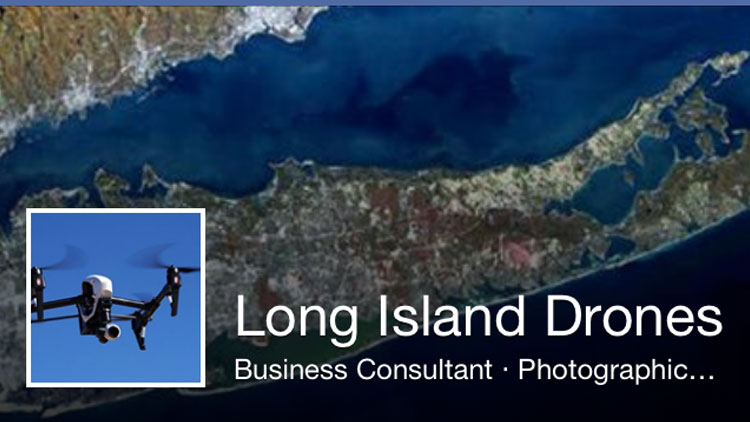
DRONE ON
While those local pieces of legislation fly about, the FAA’s much-anticipated rules governing hobby and commercial drone use are expected to land next summer.
U.S. Sen. Charles Schumer (D-NY) has been urging the FAA to tweak the draft of the agency’s proposed UAS rules released in February. He, too, was most concerned about privacy protections from drones flown by Peeping Toms. The senator has also urged both the FAA and Department of Commerce to crack down on drones used by private investigators and drug dealers.
“More must be done to protect the privacy of individuals and help build the commercial potential for this transformative technology,” said Schumer. “We all shudder to think that someone can send a drone peering into the window of our living room or our bedroom.”
Schumer additionally urged the FAA to reconsider requiring commercial drone operators to keep them in their line of sight, which could be practically impossible for farmers, miners and contractors, among other drone-applicable industries. He also asked the FAA to require drone manufacturers to install geo-fencing—using GPS so the devices would automatically steer clear of restricted airspace.
In the meantime, city authorities are using the laws on the books to keep drones in check while the city council debates bills to ban or regulate the devices. In response to the spate of drone sightings at JFK earlier this month, Queens District Attorney Richard Brown warned the operators of drones that endanger people can be charged with felony reckless endangerment and face up to seven years in prison, if convicted.
“Drones may interfere with other important private and government services and jeopardize other important missions,” said Brown, whose jurisdiction includes JFK and LaGuardia International Airports, both of which have seen drone incidents. “Many people operating unmanned aircraft are novices with little or no aviation experience.”
He urged the drone-flying public to obtain the necessary permissions, only fly the devices in designated areas, keep them away from airports and large groups and visit the FAA website knowbeforeyoufly.org.
Until novice drone fliers finally get that memo—or an errant operator gets arrested on LI—there are sure to be more pilots reporting close calls and citizens on the ground complaining about the devices buzzing overhead.
—With additional reporting by Daniela Weinstein and Kaitlin Gallagher.
11 NOTABLE DRONE SIGHTINGS IN NEW YORK CITY AND LONG ISLAND:
Jan. 31, 2007: An Egyptian engineer who entered the country on a Sudanese passport sparked a terrorism investigation with the failed test of a drone capable of carrying a 600-pound load on an abandoned air strip in Calverton, The probe concluded without charges being filed against the engineer, who was later deported for unrelated reasons.
March 4, 2013: A 3-foot-wide black quad-propeller drone came within 200 feet of Alitalia Flight 608 approaching John F. Kennedy International Airport over southwestern Nassau County at 1:15 p.m.
May 25, 2014: New York City police recovered a drone with a camera flying over Citi Field during a Mets game at 7:30 p.m. Investigators viewed the footage and determined that it was launched from Flushing Meadows Park.
July 7, 2014: An NYPD helicopter reported a “very fast moving” drone passed within 800 feet of the chopper at an altitude of 2,000 feet two miles north of the George Washington Bridge at 12:15 a.m. Officers followed the drone to its landing area, confiscated the device and charged two operators with reckless endangerment. Those charges were later dropped, but they still faced FAA fines.
July 17, 2014: A drone “about the size of a folding table” came within 50-to-75 feet of Nighthawk 2, one of the helicopters that accompany Marine One—the president’s chopper—near Bennett Field in Brooklyn. President Obama was in town for a fundraiser that afternoon, according to his schedule.
Aug. 17, 2014: The pilot of a single-engine plane reported passing a drone at an altitude of 2,000 feet five miles northwest of Long Island MacArthur Airport at 1:45 p.m.
Sept. 8, 2014: Three airline pilots reported a “very close call” with a drone at an altitude of 1,900 feet while on final approach to LaGuardia airport at 7:42 p.m.
Sept. 17, 2014: NYPD officers followed a camera-equipped drone that flew circles around a police helicopter, coming within 50 feet of colliding at an altitude of 800 feet over Brooklyn at 12:45 a.m. Police apprehended the operator, who was charged with reckless endangerment.
June 30, 2015: A U.S. Coast Guard (USCG) Station Fire Island officer reported a camera-equipped, quad-propeller drone flying over the facility at 3:27 p.m. The officer noted that it was the second such sighting there.
July 31, 2015: A drone flew directly beneath a JetBlue flight at an altitude between 800 and 900 feet as it approached the runway at John F. Kennedy International Airport at 2:25 p.m.
Aug. 2, 2015: A “quad-copter” drone flew about 25 feet in front of a Shuttle Airways flight as it was 15 feet from touching down on the runway at JFK at 6 p.m.
Sources: FAA, Suffolk County police, Nassau County police and WNBC.



